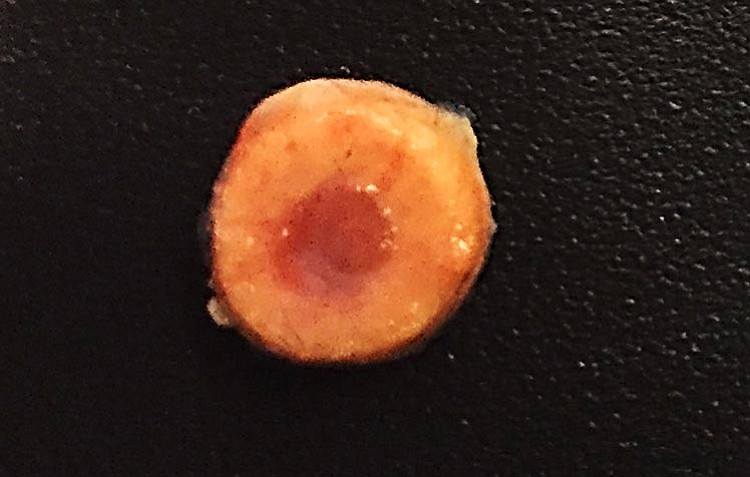
A bone transplant developed by researchers at UC San Diego is seen in this undated photo. Credit: Varghese Lab at UC San Diego
A new biomimetic bone tissue may help improve bone marrow transplants.
Engineers at the University of California San Diego have developed a bone-like implant that eliminates the need for donor cells to wipe out the host’s pre-existing cells, by allowing donor cells the space to live and grow.
“We’ve made an accessory bone that can separately accommodate donor cells. This way, we can keep the host cells and bypass irradiation,” bioengineering professor Shyni Varghese, from the UC San Diego Jacobs School of Engineering, said in a statement.
The implants are made of a porous hydrogel matrix that contains calcium phosphate minerals in the outer matrix and donor stem cells that produce blood cells in the inner matrix.
The researchers successfully tested the bone tissues in mice and the donor cells survived for at least six months, while supplying the mice with new blood cells.
The structures matured into bone tissues of the mice that have a working blood vessel network and a bone marrow inside that supplies new blood cells. After a month the implanted marrow contained a mixture of host and donor blood cells, which remained circulating in the bloodstream even after 24 hours.
“In the future, our work could contribute to improved therapies for bone marrow disease,” Yu-Ru (Vernon) Shih, a research scientist in Varghese’s lab and the study’s first author said in a statement. “That would have useful applications for cell transplantations in the clinic.”
The researchers also took stem cells from the implanted marrow and transplanted them into another group of mice with their marrow stem cells eradicated by radiation and drugs. The transplanted cells diffused into the bloodstream of the mice in the second group.
“We’re working on making this a platform to generate more bone marrow stem cells,” Varghese said.
According to Varghese, the implants could only be used in patients with non-malignant bone marrow diseases, where there aren’t any cancerous cells that need to be eliminated.
The researchers said this discovery indicates that implanted marrow is functional and donor cells can form and survive for long periods of time in the presence of host cells. They also said that the host and donor cells can travel between the implanted marrow and the host’s circulating blood through the blood vessel network formed in the implanted bone tissue.




